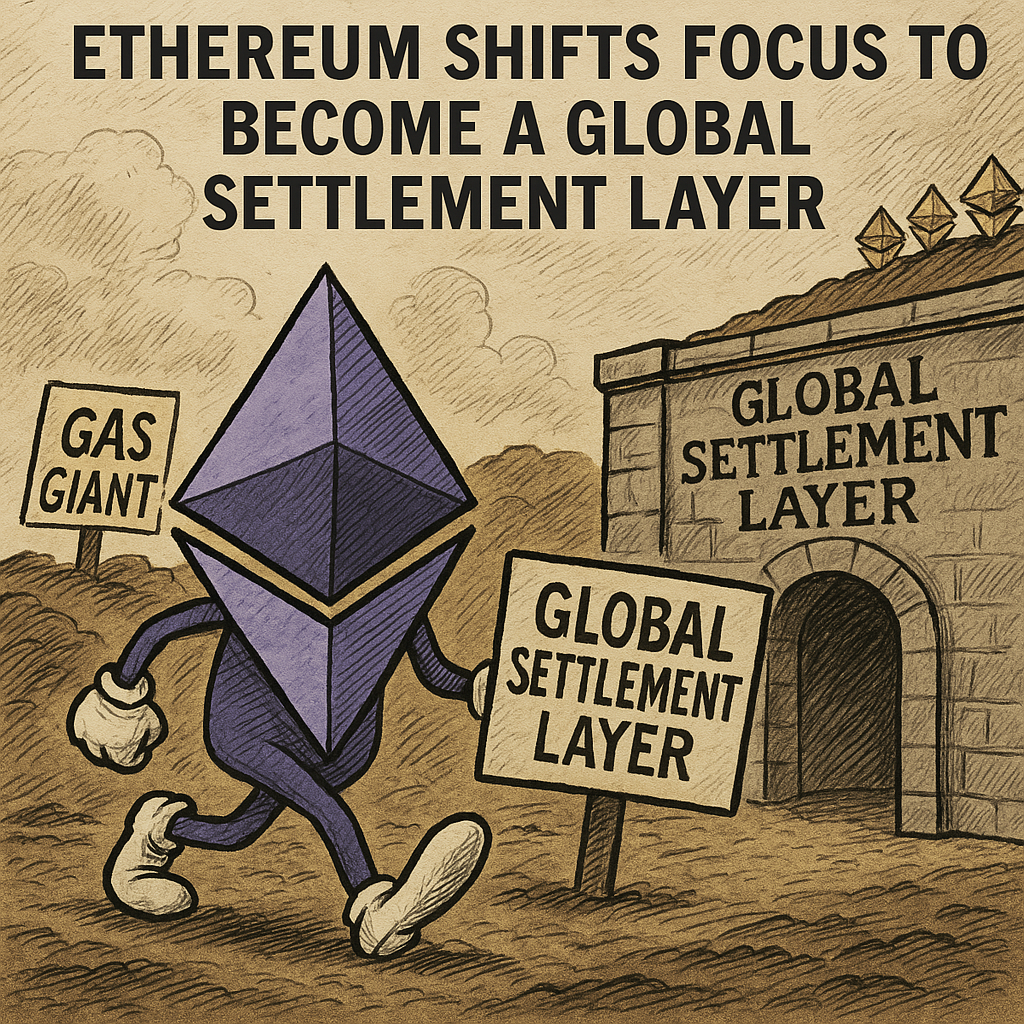
Ethereum is changing—not because it’s failing, but because it’s evolving.
In the wake of falling gas fee revenues on Ethereum L1 and the rise of Layer 2 solutions like Arbitrum and Optimism, Ethereum’s future is starting to look less like a bustling city of transactions and more like a central court of record—a global settlement layer.
From Execution Engine to Final Arbiter
Vitalik Buterin himself has spoken repeatedly about Ethereum L1 becoming the base layer for finality and security. That means L2s do the execution and user interaction, while L1 becomes the source of truth.
This isn’t Ethereum giving up market share. It’s Ethereum redefining what “winning” means.
The Implications of the Shift
- Security Focus: With less execution pressure, Ethereum L1 can optimize for robustness and long-term neutrality.
- Economic Rebalancing: Lower fee income may impact validator incentives, forcing protocol-level redesigns in reward structures.
- Governance Challenges: As L2s grow more independent, how does L1 enforce coherence without becoming a bottleneck?
Not a Collapse—A Convergence
While critics see this as Ethereum getting “hollowed out,” others see it as a strategic convergence toward scalability.
Rather than trying to do everything at once, Ethereum is becoming the base layer for everything else. Think of it as the TCP/IP of blockchains—unseen, but indispensable.
Final Thoughts
Ethereum isn’t shrinking. It’s going foundational.
In a world full of noise and spin, Ethereum’s Layer 1 is becoming the quiet place where truth gets written in code.
This isn’t the death of a dream—it’s the maturation of one. And in many ways, that’s the most powerful evolution of all.




